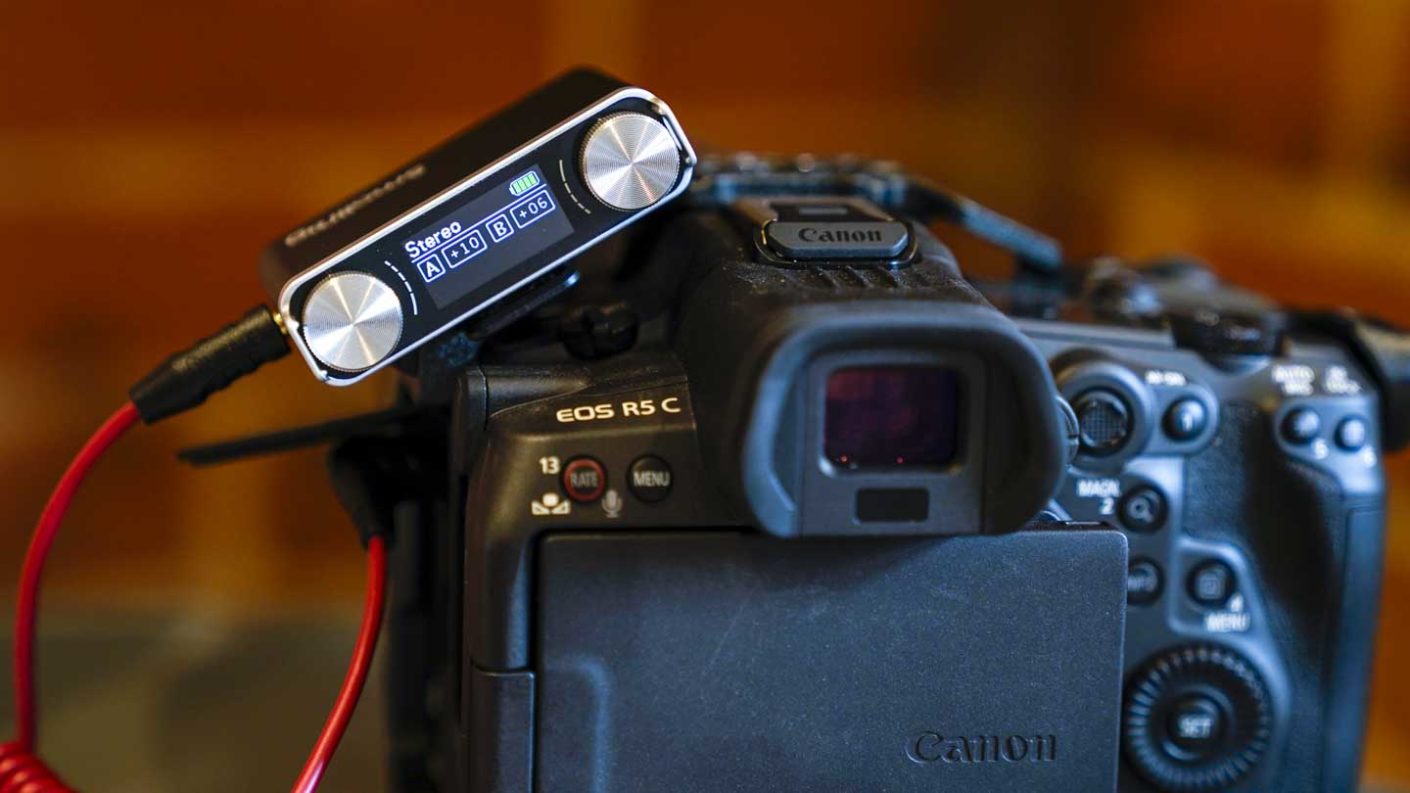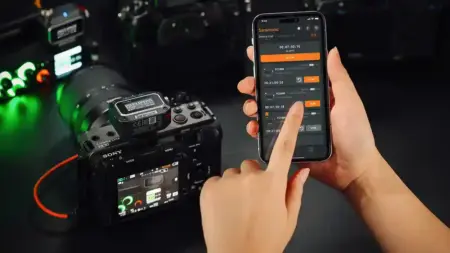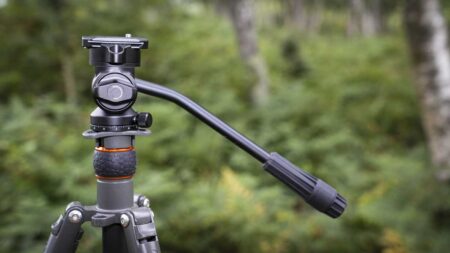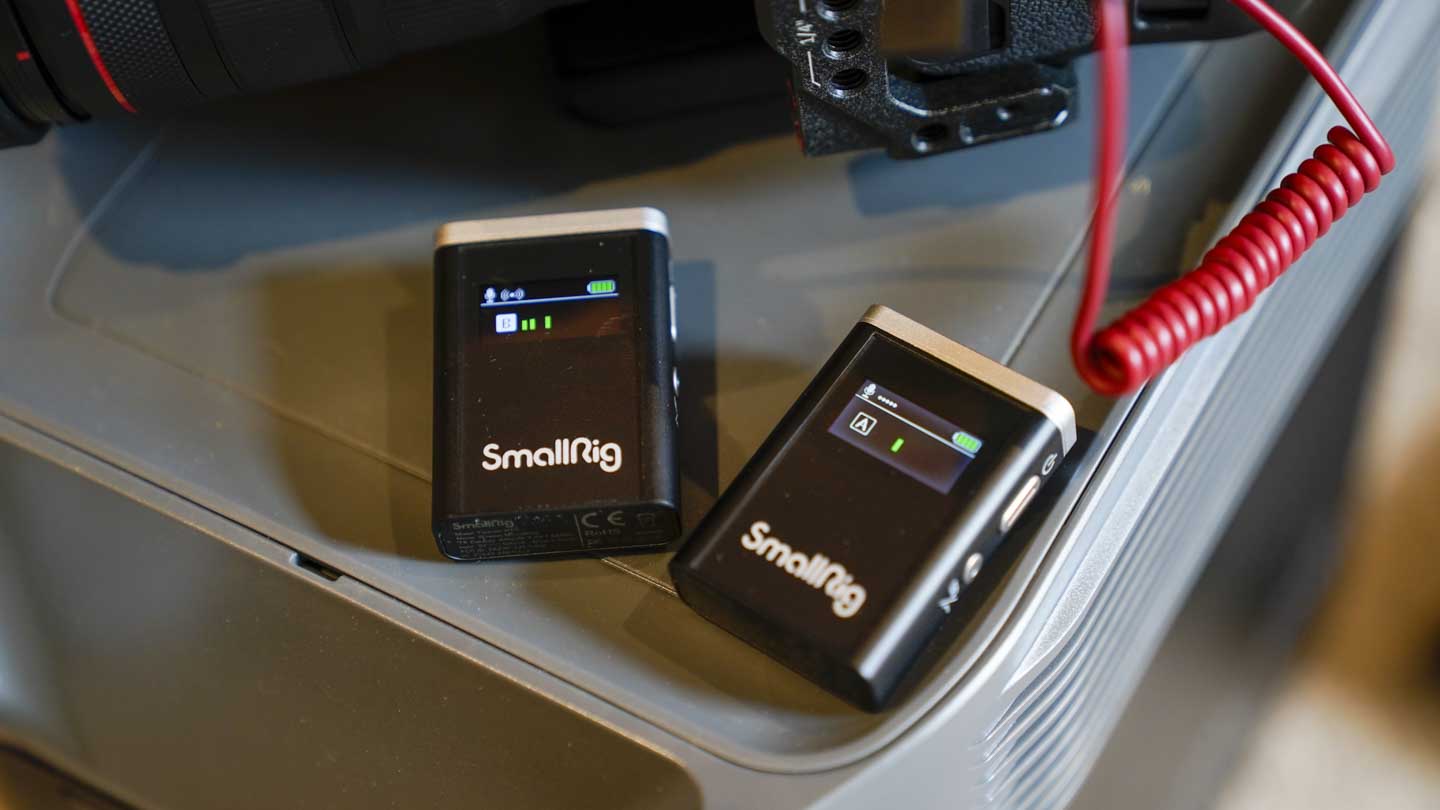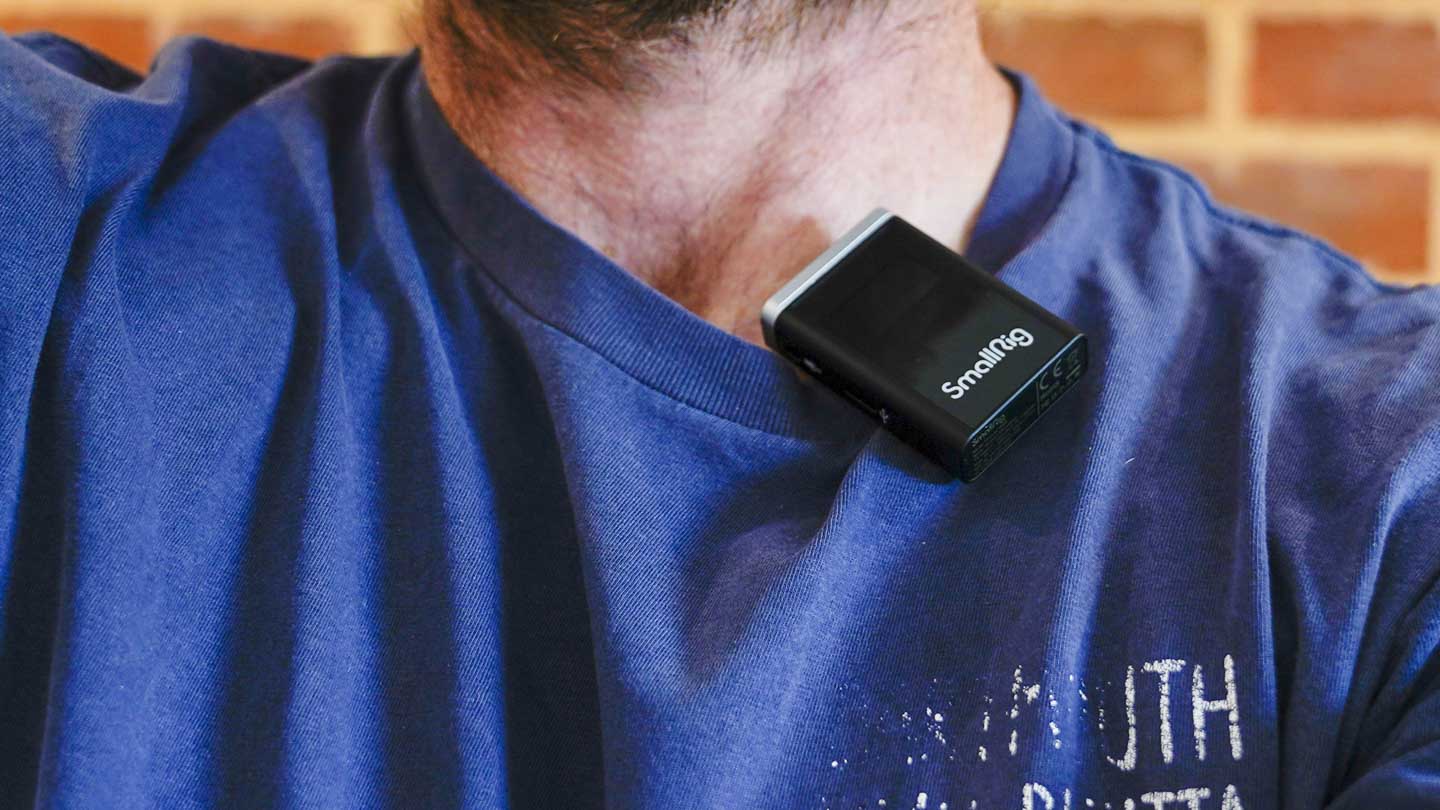Removing the units from the case requires a power button tap to get them started. I found that starting the RX first and then the two TXs on the boot sequence ensured that everything paired together quickly.
The pairing process from cold takes around 10 seconds, and you must remember to switch the units off once you’ve finished. Many other wireless systems feature an auto-start and pair system as soon as they’re removed from their case. These systems also switch off the units as soon as they’re replaced into the case, which is handy. While the SmallRig Wireless Microphone set doesn’t do this, it should come as second nature once you get into the process of switching on and off, its a bit retro in that respect.
Once the units are paired, the wireless connection is solid and plugging the receiver into the Canon EOS R5 C, the audio is of a good high quality. As ever, there is a little adjustment of the camera mic input level to get the balance of the audio levels just right.

Again the ability to adjust the audio input volume on the receiver is a real benefit, with the ease of adjustment over that input volume enabling you to balance louder interviewees with quieter ones easily. This helps save a good amount of time in post with the audio processing.
The lowpass filter also does a good job; it doesn’t over-process the audio as with some other units, but the amount applied is fixed as either on or off.
Regarding use, two things make the SmallRig Wireless Microphones stand out. The first is the audio input volume control. This direct volume adjustment means that you can easily balance vocal input volume as you record, and with the small screens, you can see the effect of those adjustments as they are made.
The other is the external audio input on the TXs; these 3.5mm jack inputs enable you to plug in an external lavalier mic. This means that, unlike other compact wireless systems, you can tuck away the small, yet visually obvious TX mic unit and replace it with a discrete tie mic. The effect is far more professional and leaps your video interviews from vlogging to professional in one step.
After using the mics for voiceovers and a few simple interviews, I have to say I’m incredibly impressed with the audio quality and ease of use of the SmallRig Wireless Microphones. The only issue I’ve had is that the initial set-up takes a few seconds longer than some other systems, such as the Hollyland Lark M1. You must remember to power down the units after use otherwise when you come back to them the following day they will be flat. Otherwise, these are superb in every other respect.

